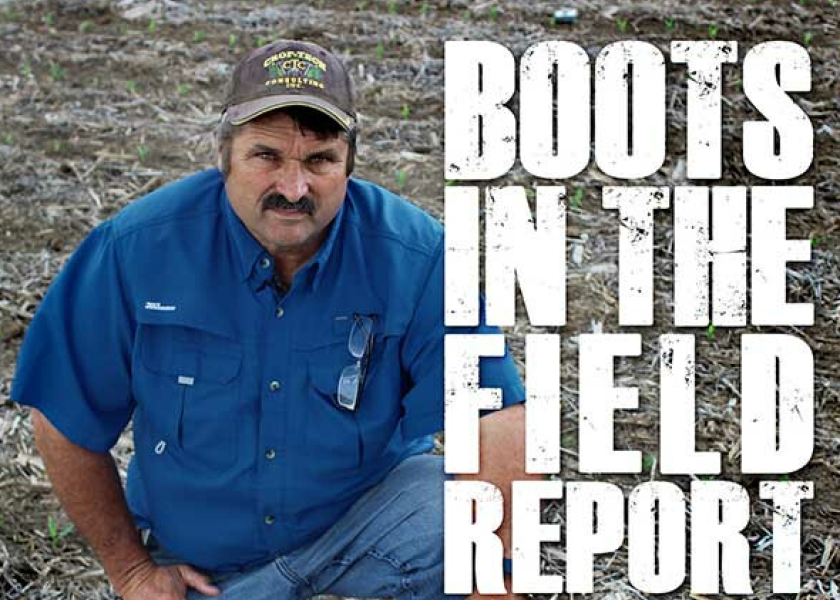Ferrie: 3 tips to address ugly corn syndrome, replant decisions and insects

Crop condition extremes are playing out across the Corn Belt this week, says Farm Journal Field Agronomist Ken Ferrie.
While some farmers tell him they have some of their best corn and soybean crops in recent memory, others say they have some of their worst.
In this week’s Boots In The Field podcast, Ferrie addresses three different issues he sees that are impacting crops now.
1. Replant decisions resulting from frost – If you are assessing soybean stands that were hit by frost a week to 10 days ago, you should be observing some regrowth in the crop. Regrowth indicates those stands may be ok to keep—as long as you provide adequate weed control.
However, do stand counts to see what you have to work with in the field before making a decision either way. As you do counts, Ferrie adds, “If you see no regrowth in a bean, even if the cotyledon is green, you have to put it in the dead pile.”
Ferrie has provided two decision-making replant calculators – one each for soybeans and corn – on his website at www.croptechinc.com. You’ll find both calculators under the word “tools” at the top of the home page.
2. Ugly corn syndrome – It’s showing up in some fields now. Farmers finding yellow or yellow-streaked corn this spring have likely experienced too much rainfall, affecting nitrogen availability. High carbon loads can also be a factor—corn-on-corn or areas that had cover crops are more likely to show this phenomenon.
Ferrie’s research in Illinois shows it takes 60 pounds of N for corn after beans and 100 pounds of N for corn after corn to keep the corn crop from slowing down during what he calls the carbon penalty stage.
If you have had a lot of rain, pull nitrate samples to evaluate what the crop needs, he adds. “Make sure you have enough nitrogen to get the crop to the finish line,” Ferrie says. “It’s much too early to walk away from the crop, especially with prices as good as they are.”
3. Pest problems – Wireworms have generated a lot of calls this spring, Ferrie reports, creating enough damage to cause replants in some areas.
“If you walk up to corn that has a dead center to it, dig it up and look for that worm,” he advises. “If it’s bad enough you have to replant, make sure you use a product for wireworm protection.”
Ferrie says he’s not sure why farmers are dealing with so many wireworm issues this season. “I just think the numbers are getting higher than low rates of an insecticide can address,” he theorizes.
Looking ahead, Ferrie says to look for cutworm as that pest is now beginning to show up in Illinois fields.
For more agronomic insights and information, listen to the Boots In The Field podcast here:
Iowa Farmer Forced to Replant as Late May Freeze Wiped Out Soybeans Planted into No-Till
Excessive Rains Could Dampen Harvest Outlook in Winter Wheat Belt
Ag Weather Forecast: The Heat is Coming







